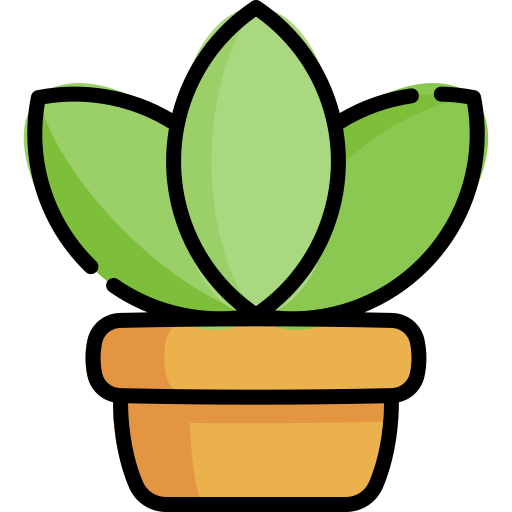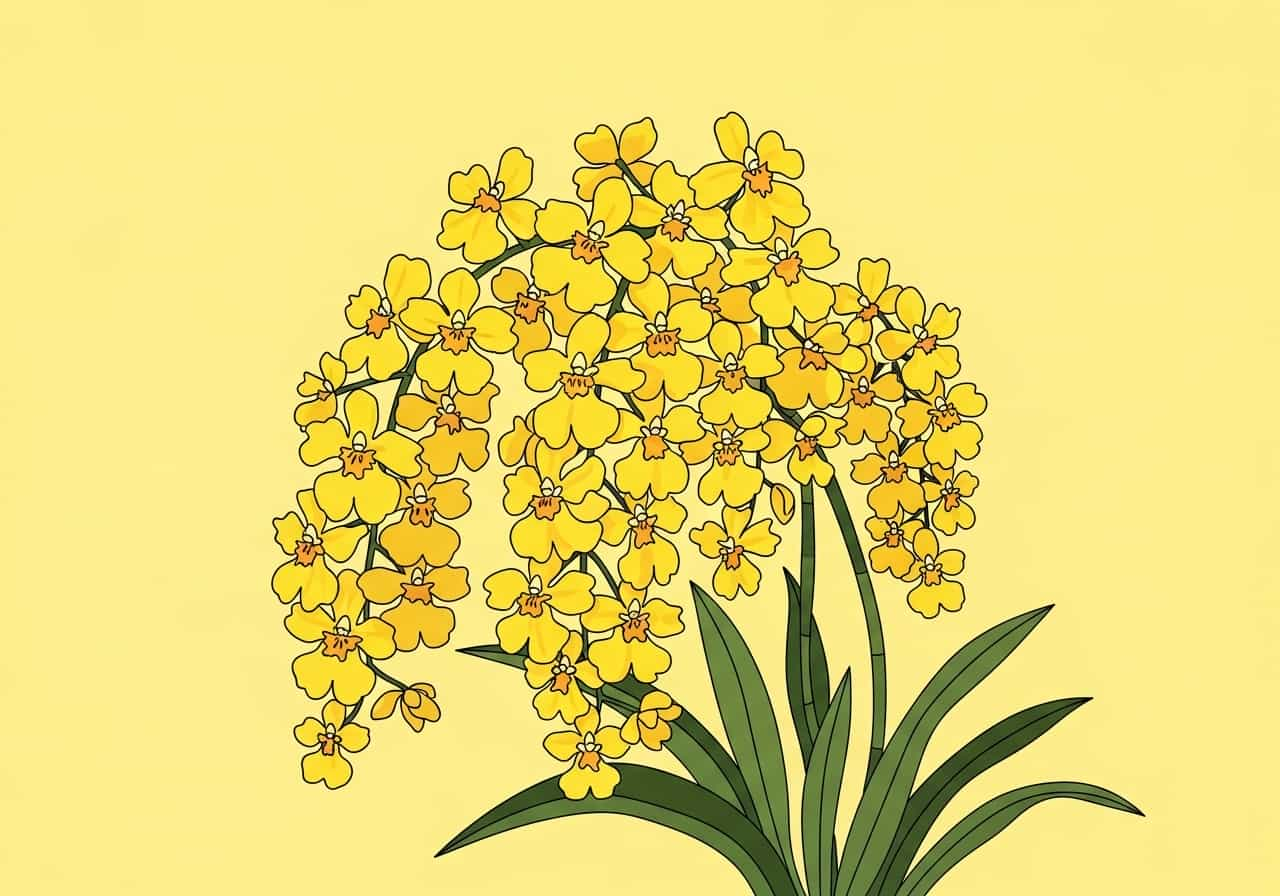If you’re looking to add a burst of cheerful color to your orchid collection, look no further than the Oncidium. Affectionately known as the “Dancing Lady” orchid, this vibrant plant is famous for its cascading sprays of small, delicate flowers that seem to dance in the slightest breeze. Often appearing in brilliant yellows, but also available in shades of pink, red, and patterned combinations, Oncidiums bring a unique energy and charm to any indoor garden.
While their appearance is delicate, many Oncidium hybrids are surprisingly tough and adaptable, making them an excellent choice for beginners who are ready to expand beyond Phalaenopsis. This guide will provide essential Oncidium orchid care tips, from getting the light and water right to understanding its unique needs. You’ll soon see why these cheerful Dancing Lady orchids are such a rewarding addition for any plant lover.
What Are Oncidium “Dancing Lady” Orchids?

The nickname “Dancing Lady” comes from the flower’s distinct shape. The large, prominent lip (labellum) often resembles the full skirt of a ballroom dancer, while the smaller petals and sepals look like her arms and torso. When a full spray of these flowers moves gently, it creates the illusion of a troupe of dancers. It’s a fitting name for such a lively and joyful plant.
Like many popular orchids, Oncidiums are primarily epiphytes native to Central and South America. They grow on tree branches, which means their care needs to reflect this soil-free lifestyle. They also feature pseudobulbs, which are swollen, fleshy structures at the base of the leaves. These pseudobulbs act as storage tanks for water and nutrients, making the plant resilient and offering a clear visual cue for its watering needs.
The Essentials of Oncidium Orchid Care
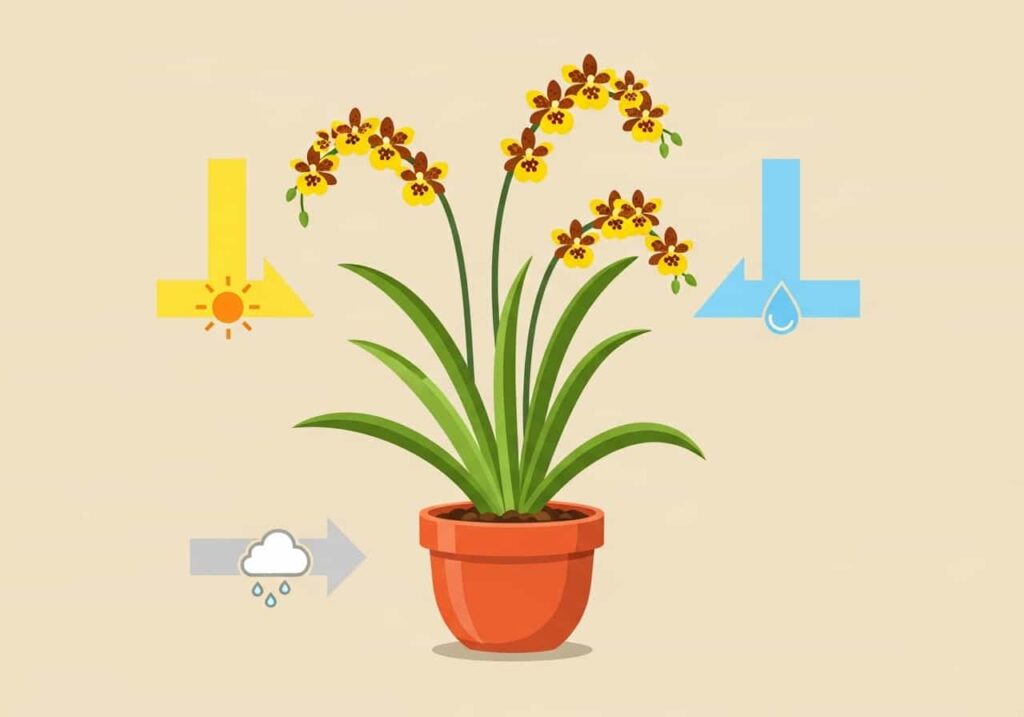
Oncidiums are vigorous growers that can reward you with multiple flower spikes a year. Their care is relatively straightforward, falling somewhere between the needs of a Phalaenopsis and a Cattleya. Mastering a few key principles is all it takes to help them flourish.
Light: Bright and Filtered
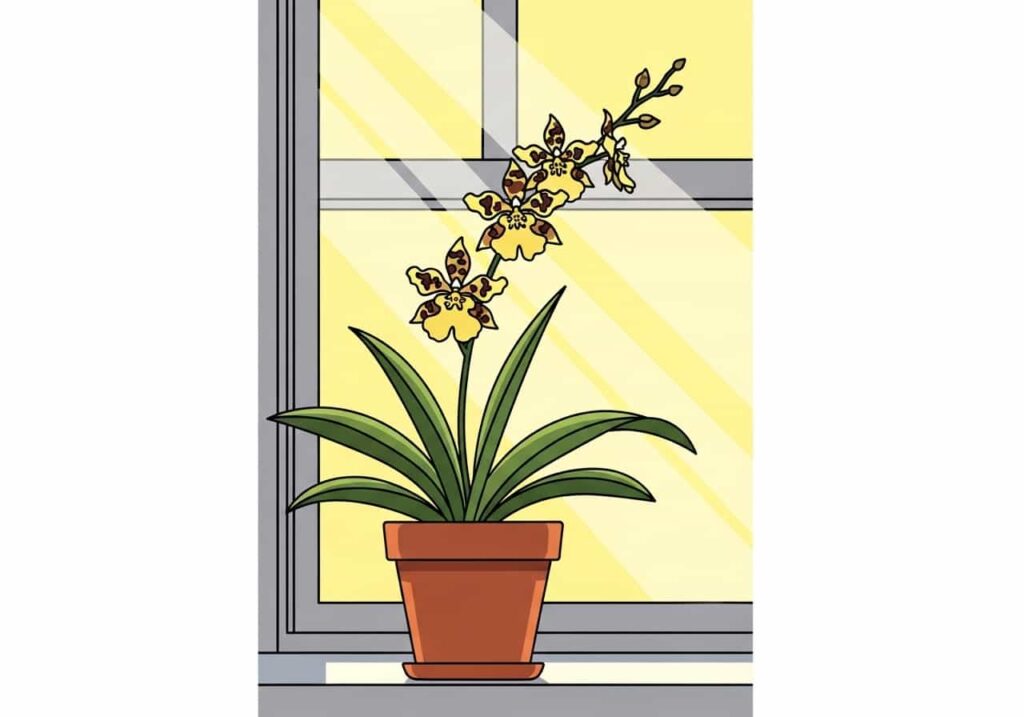
Oncidiums thrive in bright, indirect light. They enjoy more light than a Phalaenopsis but can be scorched by the intense, direct sun that a Cattleya might tolerate.
- Ideal Location: An east-facing window that provides bright but gentle morning sun is perfect. A spot near a west- or south-facing window, shielded by a sheer curtain, also works well.
- Leaf Color as a Guide: The leaves should be a bright, medium-green color. If the leaves are a dark, lush green, your Oncidium is likely not getting enough light to produce flowers. If they become yellowish or develop black spots, the light is too intense.
Watering: The Wrinkle Test
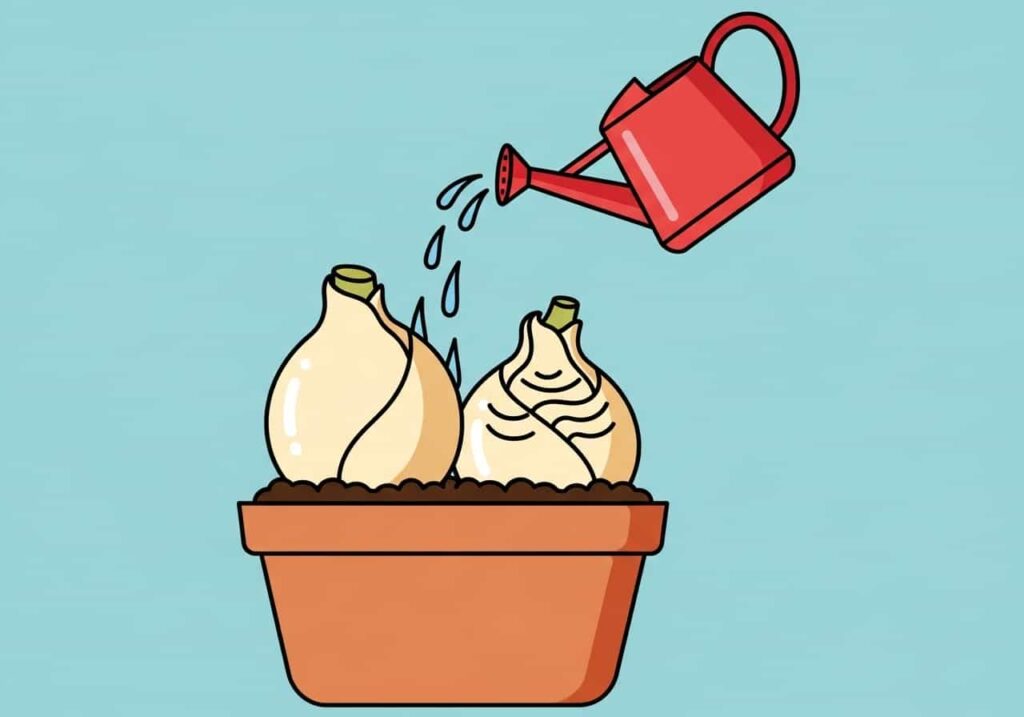
The pseudobulbs are your best guide for watering. These structures should be plump and smooth. When they start to look slightly wrinkled or shrunken, it’s a clear sign that the plant is thirsty. This built-in indicator helps prevent the common mistake of overwatering.
- When to Water: It’s best to water just as the potting medium is approaching dryness, but before it becomes bone dry. For most homes, this will be about once every 7 to 10 days. The “wrinkle test” on the pseudobulbs is more reliable than a strict schedule.
- How to Water: Water your Oncidium thoroughly at the sink. Use lukewarm water to flush the entire pot for 30-60 seconds, allowing excess water to drain completely from the bottom. This method ensures all the roots receive moisture and helps wash away mineral buildup.
- Humidity: Oncidiums appreciate humidity levels of 40-60%. If your home is dry, you can place the pot on a tray of pebbles and water or group it with other plants to increase ambient moisture.
Oncidium Care Tips for Beginners

Once you have the basics of light and water down, a few additional tips can ensure your Dancing Lady orchid thrives and puts on a spectacular show.
Choosing the Right Pot and Mix
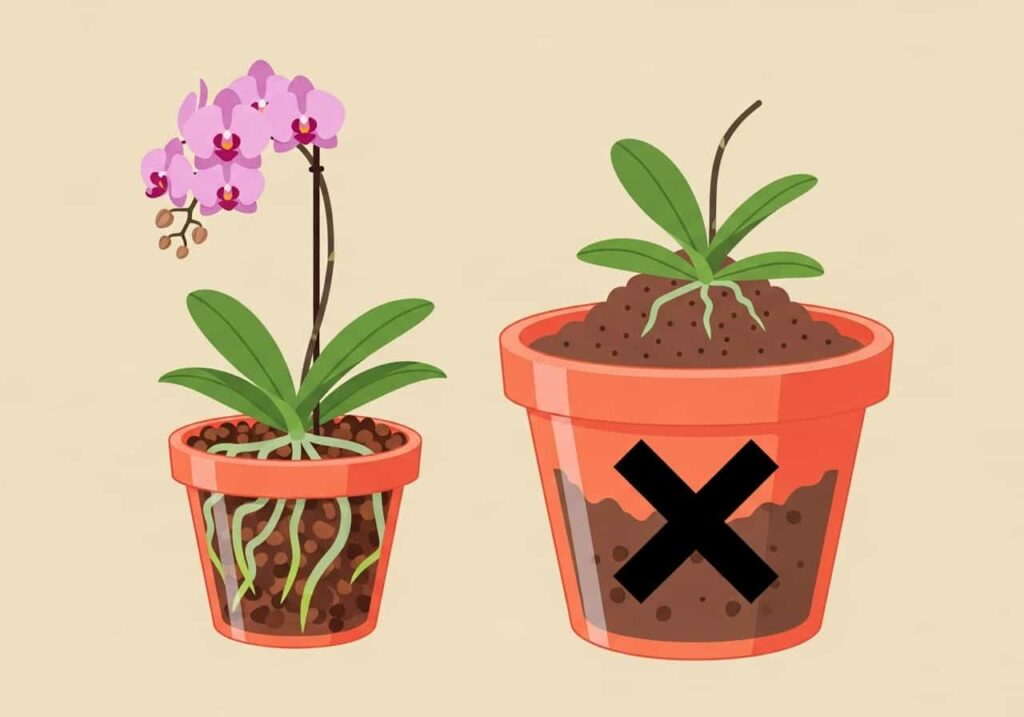
Oncidiums have fine roots that prefer a potting medium that retains a bit more moisture than mixes for Phalaenopsis or Cattleya, but still provides excellent drainage.
- Best Potting Mix: A fine-grade fir bark mix is an excellent choice. You can also use mixes that incorporate sphagnum moss or perlite to help retain some moisture while maintaining good airflow.
- Potting: These orchids like to be snug in their pots. A pot that is too large will hold too much water and can lead to root rot. When you repot, choose a new container that is only one inch larger in diameter. Plastic pots work well as they retain moisture a little longer than clay pots.
- When to Repot: Repot your Oncidium every one to two years, or when the potting medium has broken down. The best time is after it has finished flowering, and you can see new growth and roots starting to form at the base of the pseudobulbs.
Fertilizing for Growth and Blooms
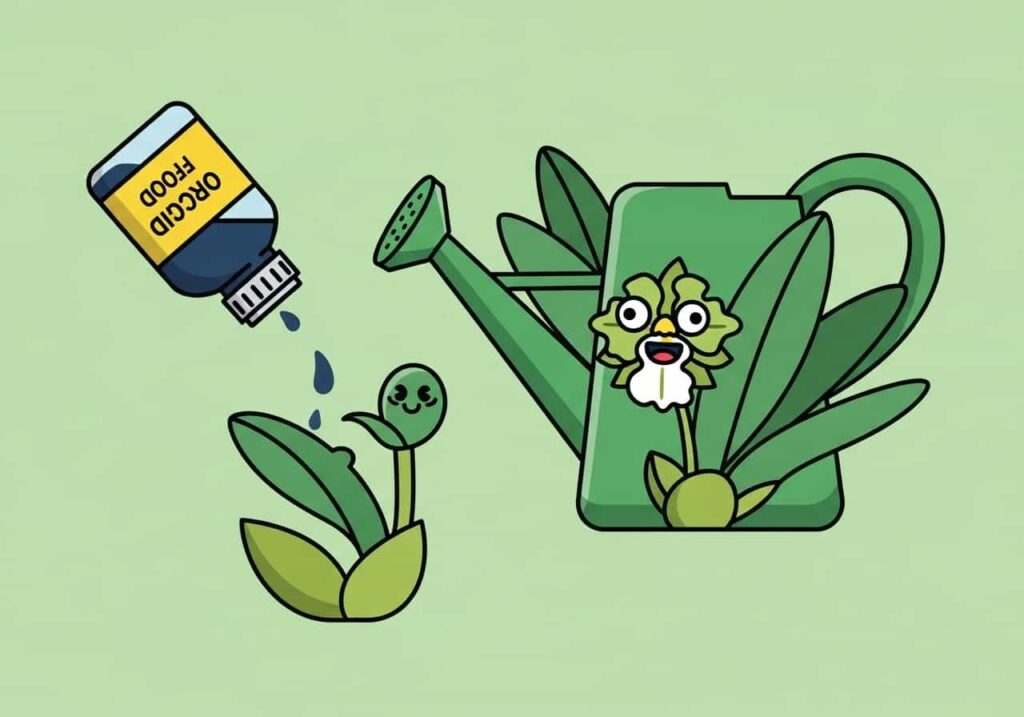
Oncidiums are active growers and benefit from regular feeding during their growing season.
- Fertilizer Schedule: During spring and summer, when the plant is producing new pseudobulbs and leaves, use a balanced orchid fertilizer (such as 20-20-20) at quarter or half strength with every other watering.
- Reduce in Winter: During the fall and winter, reduce fertilizing to once a month to allow the plant a period of rest.
- Flush Regularly: Once a month, flush the pot with plain water to prevent the buildup of fertilizer salts, which can damage the sensitive roots.
What to Do After Flowering
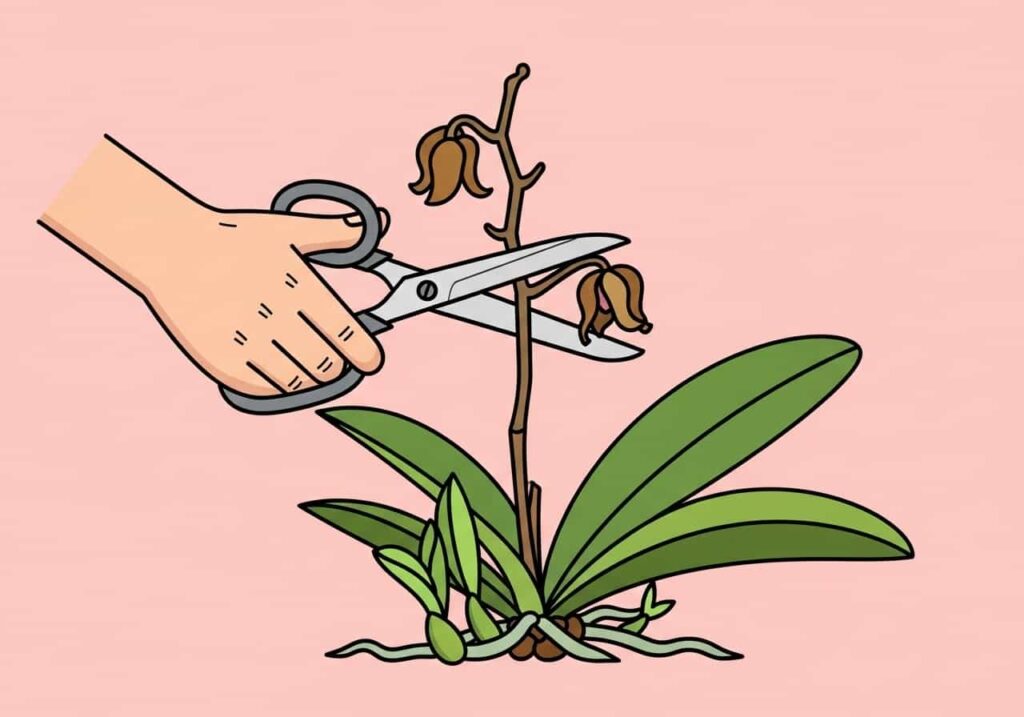
After the last flower has wilted and dropped, you can cut the flower spike all the way down to its base. This directs the plant’s energy toward developing new pseudobulbs, which will produce the next round of flowers. Healthy Oncidiums can bloom more than once a year, so be prepared for another show!
A Cheerful Addition to Any Home
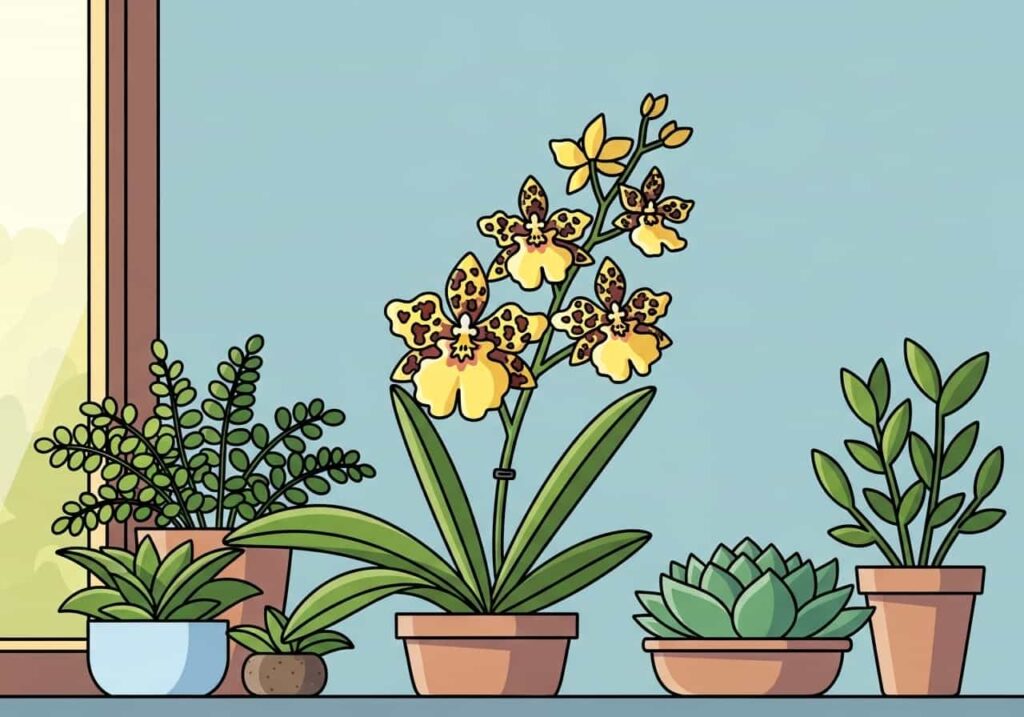
Oncidium orchids are a delight to grow. Their vibrant color, unique flower shape, and profuse blooming habit bring a sense of joy and energy to any space. They are robust, communicative plants—their pseudobulbs tell you exactly when they need water—making them a perfect and forgiving choice for enthusiasts looking to grow their collection.
By providing bright, indirect light and paying attention to the plant’s needs, you can easily succeed with these Dancing Lady orchids. Welcome one into your home and get ready to enjoy its cheerful, dancing blooms for years to come.
